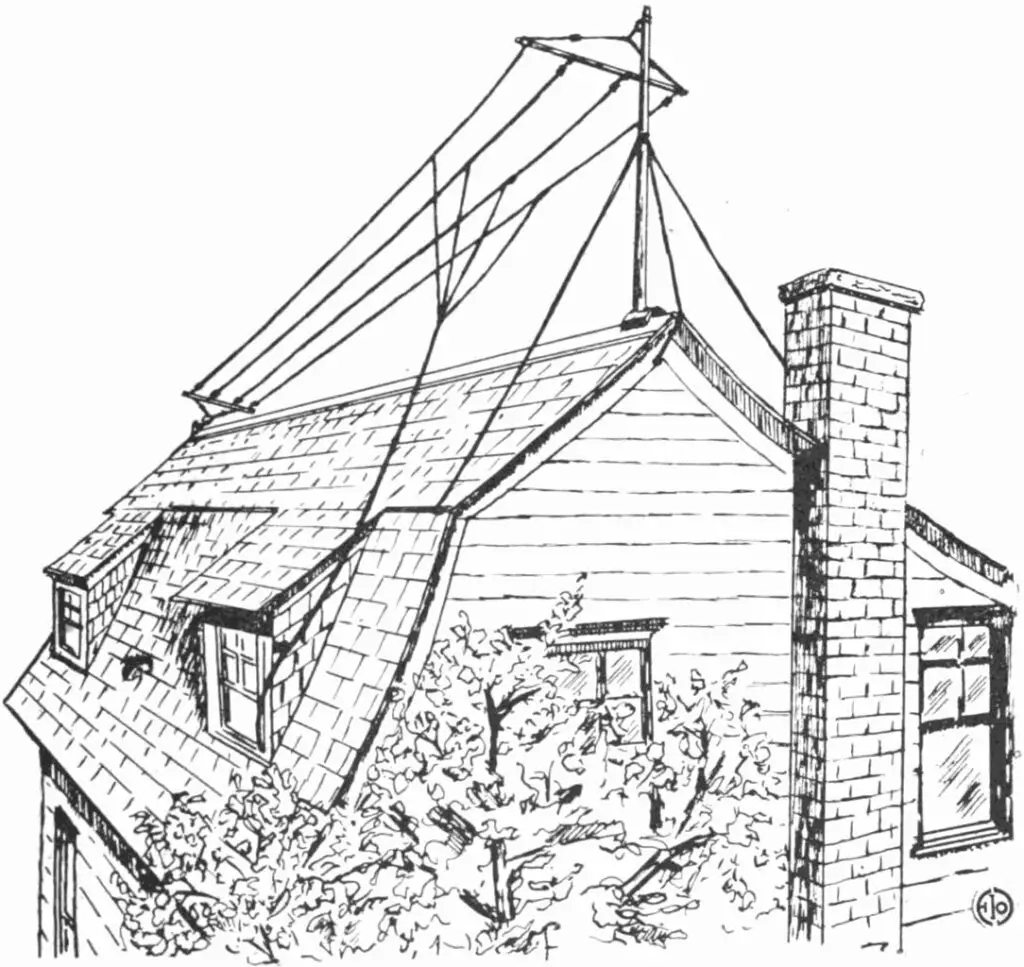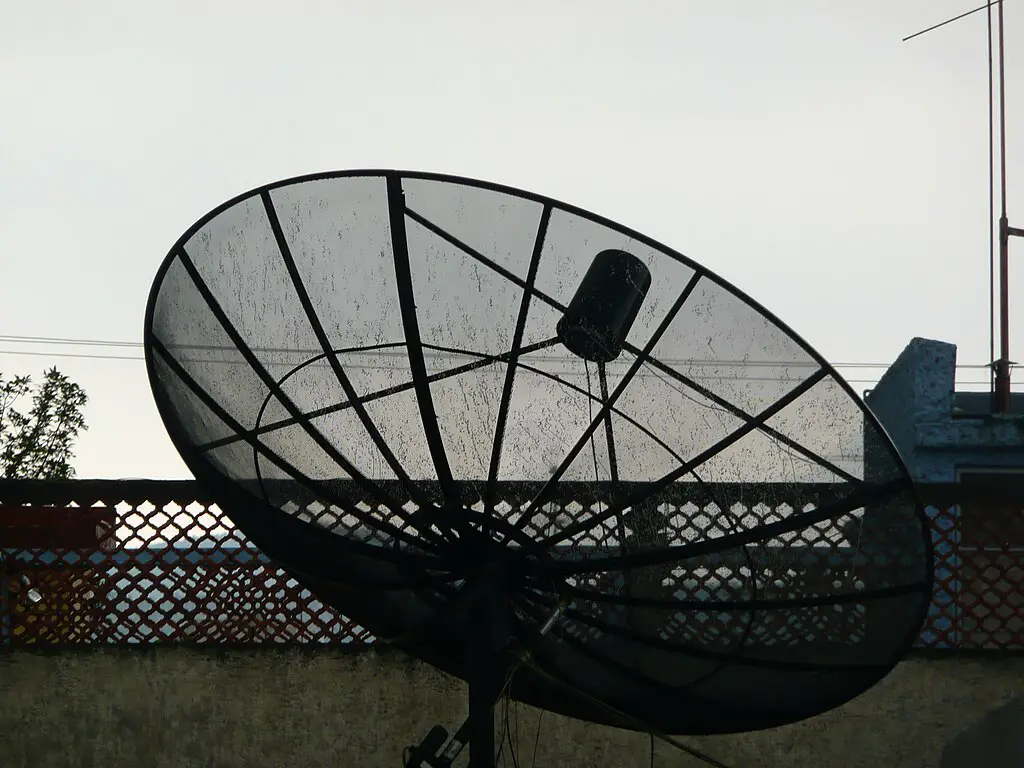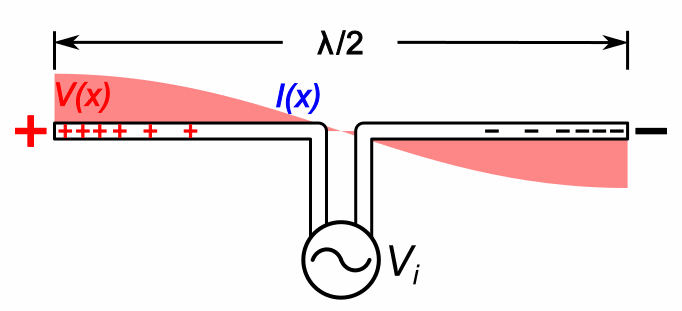Antennas serve as the critical interface between the world of radio waves propagating through free space and the electric currents flowing in conductors. This fundamental component of radio communication systems plays a pivotal role in transmitting and receiving the electromagnetic energy that enables radios to send and receive information over vast distances. The effectiveness of an antenna directly influences the efficiency and reach of a radio communication link, making its design and selection vital for optimal performance.
Our objective is to demystify the principles underlying how antennas work and to provide an overview of the basic types of antennas commonly used in amateur radio. By exploring the mechanics of antenna operation, from simple dipoles to complex directional arrays, we aim to equip amateur radio enthusiasts with the knowledge to make informed decisions about antenna selection and to foster a deeper appreciation for the science that allows us to bridge distances with radio waves.
Fundamentals of Antenna Operation
An antenna is a device designed to transmit or receive electromagnetic waves. In the realm of transmitting, it converts electrical currents into electromagnetic waves that are then emitted into free space. Conversely, when receiving, an antenna captures electromagnetic waves from the surrounding environment and converts them back into electrical currents for processing by the radio equipment. This dual capability makes the antenna a fundamental component in the architecture of any radio communication system, bridging the gap between the ethereal world of electromagnetic waves and the tangible realm of electronic circuits.
Principle of Resonance
At the heart of antenna operation lies the principle of resonance. An antenna is said to be resonant at a particular frequency when its physical length corresponds to a specific fraction (typically half or a quarter) of the wavelength of the radio waves it is designed to transmit or receive. This resonance enhances the antenna’s efficiency, allowing it to radiate or receive energy more effectively at the resonant frequency. The relationship between frequency and wavelength (, where
is the wavelength,
is the speed of light, and
is the frequency) is crucial in designing antennas that are tuned to operate within specific bands of the radio spectrum, making resonance a key concept in antenna theory.
Radiation Patterns
Another critical concept in understanding how antennas work is the radiation pattern. This pattern represents the distribution of power radiated by an antenna as a function of direction. It provides a three-dimensional map of how an antenna disperses energy into space or, conversely, from which directions an antenna most effectively collects incoming signals. Radiation patterns can vary widely among different types of antennas, ranging from omnidirectional patterns, which radiate power uniformly in all horizontal directions, to highly directional patterns, which focus energy in specific directions for increased range and signal strength. Understanding an antenna’s radiation pattern is essential for optimizing the placement and orientation of antennas in amateur radio setups, ensuring the best possible communication links over desired distances and directions.

Basic Parameters of Antennas
Understanding the fundamental parameters of antennas is crucial for selecting the right antenna for a specific application and for optimizing its performance. These parameters include gain, directivity, bandwidth, and polarization, each contributing uniquely to the antenna’s overall functionality and efficiency.
Gain and Directivity
Gain represents the ability of an antenna to concentrate signal power in a particular direction when compared to a theoretical isotropic radiator (an ideal antenna that radiates equally in all directions). It is a measure of the antenna’s efficiency in converting input power into radio waves in a specific direction and is expressed in decibels (dB). Directivity, closely related to gain, is a measure of the concentration of an antenna’s radiated power in its strongest direction. High-gain and high-directivity antennas are particularly useful for long-distance communication, where focusing the signal’s power in a narrow beam can significantly enhance the communication range.
Bandwidth
The bandwidth of an antenna refers to the range of frequencies over which it can operate effectively. It is determined by how much the antenna’s performance, in terms of parameters like gain and impedance, deviates from its optimal values across a given frequency range. Antennas with broader bandwidths can accommodate a wider range of frequencies, making them versatile for applications requiring multi-band or wideband operation.
Polarization
Polarization describes the orientation of the electromagnetic waves radiated or received by an antenna. It can be linear (where the electric field oscillates in a single plane) or circular (where the electric field rotates in a circle as the wave propagates). The antenna’s polarization must match the polarization of the received signal for optimal reception; otherwise, signal loss can occur.
Antenna Size and Wavelength
The size of an antenna is closely related to the wavelength of the frequency it is designed to transmit or receive. A half-wave dipole, for example, is a simple yet effective antenna design whose total length is half the wavelength () of its intended operational frequency. This relationship between antenna size and wavelength is fundamental in antenna design, impacting the antenna’s resonance, radiation pattern, and overall efficiency.
Impedance Matching
For maximum power transfer between an antenna and its connected transmitter or receiver, their impedances must be matched. Impedance is a measure of the resistance and reactance an antenna presents to the flow of electrical current, and it varies with frequency. Mismatched impedances can result in power being reflected back towards the transmitter, reducing the system’s efficiency and potentially damaging the equipment. Impedance matching involves adjusting the antenna design, employing matching networks, or using tuners to ensure that the antenna’s impedance matches that of the transmission line and the connected equipment.
Each of these parameters plays a vital role in the design and selection of antennas for amateur radio applications. Understanding and optimizing these parameters allows radio operators to achieve the best possible performance from their antenna systems, whether for local communication on VHF/UHF bands or for reaching distant contacts on HF frequencies.
Types of Antennas
The array of antenna types available to amateur radio operators is vast, each designed for specific applications, frequency bands, and operational needs. Understanding these various types helps in selecting the most appropriate antenna for achieving effective communication.
Dipole Antennas
A basic half-wave dipole antenna is perhaps the most fundamental type of antenna in amateur radio. It consists of two conductive elements, each a quarter wavelength long, making the total length of the antenna half a wavelength at the operating frequency. This simplicity allows for easy construction and adaptation to various frequencies. A variant of this, the folded dipole, incorporates a parallel wire connected at both ends to form a loop. This design increases the antenna’s impedance, making it more compatible with common 300-ohm transmission lines and broadening its bandwidth.
Yagi-Uda Antennas
The Yagi-Uda antenna (usually just called “Yagi” antenna) is renowned for its directional properties, making it an excellent choice for amateur radio operators interested in DXing, or making long-distance contacts. Comprising a driven element (like a dipole), reflectors, and directors, this antenna focuses energy in a specific direction, thereby increasing gain and reception sensitivity in that direction. Its design is particularly beneficial for isolating signals from a particular direction while minimizing interference from others.
Vertical Antennas
Vertical or monopole antennas are characterized by their upright positioning and typically operate as a quarter-wave antenna. Often used with a ground plane, which consists of radials spread out from the base of the antenna, vertical antennas provide an omnidirectional radiation pattern, making them ideal for applications where signal directionality is not a primary concern. Ground-plane antennas are particularly favored for their ability to work well over a range of conditions, including mobile and marine environments.
Loop Antennas
Loop antennas, especially magnetic loop antennas, are a popular choice for amateur radio operators dealing with space constraints. These antennas can be small, only a fraction of a wavelength in circumference, yet still offer efficient performance. Magnetic loop antennas are known for their narrow bandwidth and high Q factor, requiring tuning to the desired frequency. However, their compact size and lower radiation angle make them particularly effective for urban settings or for operators with limited space.
Parabolic Antennas
Parabolic antennas are used primarily in the microwave bands for point-to-point communication, satellite communication, and deep-space radio applications. Featuring a parabolic reflector that focuses the radio waves into a narrow, highly directional beam, these antennas provide high gain, making them ideal for long-distance communication over the microwave frequencies. While not commonly used in everyday amateur radio setups due to their complexity and the specific conditions under which they operate best, parabolic antennas are crucial for certain high-frequency and experimental amateur radio endeavors.

Antenna Design and Construction
The process of designing and constructing an antenna involves a thoughtful balance between theoretical principles, practical considerations, and the specific requirements of the intended communication activities. Whether for casual contacts within the local community, DXing across continents, or experimenting with digital modes, the right antenna can significantly enhance the amateur radio experience.
Designing an Antenna
The first step in designing an antenna is to clearly define the communication needs it must fulfill. Considerations include the frequency bands of interest, the preferred types of communication (e.g., local, regional, or global), and the physical constraints of the environment (such as space limitations and permissible structures). These factors guide the selection of the antenna type, size, and design. For example, a compact magnetic loop antenna might be ideal for an operator with limited space, while a Yagi-Uda antenna could be the choice for someone focused on long-distance communication.
Understanding the relationship between wavelength and frequency, as well as the principles of resonance, is crucial in designing an effective antenna. Antennas must be properly sized for the frequencies they are intended to operate on to ensure efficient transmission and reception of radio waves.
Building an Antenna
Constructing an antenna can be a rewarding project, offering practical experience with the theoretical aspects of amateur radio. Materials commonly used in antenna construction include wire, tubing, or rods for the elements, and non-conductive materials like PVC for supports and insulators. The choice of materials depends on the antenna design, the frequencies it will operate on, and environmental considerations such as weather resistance and mechanical stability.
Tools required for building an antenna might include basic hand tools, soldering equipment, and, for more complex projects, SWR meters or antenna analyzers to fine-tune the antenna’s performance. Safety is a paramount consideration, especially when working with antennas at heights or near power lines. Always ensure that antenna structures are securely mounted and that all electrical work is performed in accordance with safety standards.
Antenna Tuners
An antenna tuner, or antenna matching unit, plays a vital role in optimizing antenna performance. It compensates for mismatches between the antenna’s impedance and the transmitter or receiver, minimizing power losses and ensuring maximum radiated power. While not a substitute for a well-designed antenna, an antenna tuner can significantly improve the efficiency of an antenna system, especially in multi-band setups where an antenna may not be resonant on all desired frequencies.
Incorporating an antenna tuner into an amateur radio setup allows for greater flexibility in antenna use and can help achieve optimal performance across a wider range of frequencies and conditions. Whether embarking on a simple dipole construction project or tackling a more ambitious antenna design, the principles of antenna theory, coupled with practical building experience, lay the foundation for successful amateur radio communication.
The Science Behind Antenna Theory
Diving deeper into the electromagnetic theory behind antenna operation brings us closer to the core principles that enable antennas to function as mediators between radio waves in free space and electrical currents in conductors. At the heart of this process are Maxwell’s equations, which offer a comprehensive framework for understanding how electromagnetic fields behave and interact.
Maxwell’s Equations: The Theoretical Foundation
Maxwell’s equations consist of four pivotal laws that describe the dynamics of electric and magnetic fields:
- Gauss’s Law for Electricity illustrates how electric charges generate electric fields. This principle underpins the initiation of electromagnetic waves as charges oscillate in an antenna.
- Gauss’s Law for Magnetism states that magnetic monopoles do not exist, ensuring that magnetic fields are continuous and do not begin or end at any point. This continuity is essential for the cyclical nature of electromagnetic waves.
- Faraday’s Law of Induction reveals how a time-varying magnetic field induces an electromotive force (EMF) in a nearby conductor. This law is crucial for understanding how an incoming electromagnetic wave can induce a current in a receiving antenna.
- Ampere’s Law (with Maxwell’s addition) demonstrates that magnetic fields are generated both by electric currents and by changing electric fields. This addition predicted the existence of electromagnetic waves that radiate away from accelerating charges, such as those in an antenna.

From Electromagnetic Waves to Electrical Currents
The conversion of electromagnetic waves into electrical currents—and vice versa—is rooted in the interaction between the oscillating electric and magnetic fields of an electromagnetic wave and the electrons in an antenna’s conductor. When an electromagnetic wave encounters an antenna, the oscillating electric field exerts forces on the free electrons within the antenna’s material, causing them to accelerate back and forth. This acceleration of electrons creates an alternating electrical current that mirrors the frequency of the electromagnetic wave.
This process is most efficient when the antenna is resonant at the wave’s frequency, meaning the antenna’s physical length corresponds to a specific fraction of the wavelength of the incoming radio waves. Resonance enhances the antenna’s ability to efficiently transfer energy from the electromagnetic wave into electrical currents and back. The efficiency of this conversion is crucial for both transmitting and receiving operations and is influenced by factors such as the antenna’s design, the materials used, and its surroundings.
Principle of Reciprocity Revisited
The principle of reciprocity in antennas, which maintains that an antenna’s transmitting and receiving characteristics are identical, further underscores the symmetry in the conversion process governed by Maxwell’s equations. This symmetry ensures that an antenna designed for optimal transmission of a specific frequency and pattern will inherently be capable of receiving signals of the same frequency and from the same directions with equal efficiency.
Understanding the conversion mechanism and the underlying electromagnetic principles offers profound insights into antenna design and operation. It empowers amateur radio operators to not only select and construct antennas tailored to their specific needs but also to appreciate the elegant physics that allow us to communicate across the globe.
Practical Applications in Amateur Radio
Antennas are the linchpin in the vast spectrum of amateur radio activities, each type tailored for distinct operational scenarios from the ground up.
VHF/UHF Local Communications
For local communication within the VHF and UHF bands, operators rely on antennas like verticals and Yagis. Vertical antennas, favored for their omnidirectional coverage, are staples in scenarios requiring broad, non-directional reach such as emergency services or club nets. Conversely, Yagi antennas, with their inherent directivity, serve operators aiming for selective, longer-distance contacts within these bands, including satellite operation and targeting distant repeaters.
HF Global DXing
In the pursuit of global communication across the HF bands, antenna choice critically impacts an operator’s ability to establish distant contacts. Dipoles, often configured as inverted-Vs or slopers depending on space and directional preference, offer a balance between simplicity and efficiency for worldwide communication. For enthusiasts dedicated to DXing, beam antennas like the Yagi-Uda provide the necessary gain and directivity to cut through noise and reach across continents, making them indispensable tools for international contests and rare contact achievements.
Experimentation for Optimization
The dynamic nature of radio wave propagation necessitates ongoing experimentation with antenna designs and configurations. This experimentation is not merely about constructing antennas but fine-tuning them to meet specific challenges posed by an operator’s environment, desired frequency range, and communication goals. Adjustments may involve tweaking element lengths for resonance on additional bands, experimenting with wire antenna orientations to exploit propagation advantages, or implementing complex antenna switching systems for versatility. Tools such as SWR meters and antenna analyzers are critical in this process, enabling precise adjustments that maximize antenna performance and ensure efficient operation across desired bands.
Conclusion
Antennas stand as the pivotal interface between the theoretical world of electromagnetic waves and the practical domain of amateur radio communication. A solid grasp of basic antenna theory, including the principles of operation, key parameters, and the characteristics of various types, fundamentally enhances an amateur radio operator’s ability to communicate effectively. This understanding not only facilitates the selection of appropriate antennas for specific communication tasks—ranging from local VHF/UHF exchanges to global HF DXing—but also underscores the importance of antenna placement, orientation, and configuration in optimizing overall system performance.
The value of hands-on experimentation in the realm of antennas cannot be overstated. It is through this iterative process of design, testing, and refinement that theoretical concepts are transformed into tangible outcomes. Experimentation fosters a deeper comprehension of how antennas interact with their environment and with the electromagnetic spectrum, enabling operators to fine-tune their systems to achieve maximal efficiency and reliability. Engaging with antenna theory and design in a practical, hands-on manner not only elevates an operator’s skill set but also contributes to the collective knowledge and innovation within the amateur radio community.
Further Reading
For more information on antenna theory, how antennas work, and basic types of antennas, the following resources can offer detailed insights and information:
- An Introduction to Antenna Basics at All About Circuits offers a primer on basic antenna theory, including standing waves and the importance of antenna resonance.
- Understanding Antenna Specifications and Operation, Part 1 by DigiKey, which introduces designers to antenna theory, specifications, and real-world antenna examples, focusing on dipoles and monopole whips.
- Antenna Fundamentals and Antenna Basics at Antenna-Theory.com, covers advanced frequency information, polarization of waves, effective aperture, and the Friis Transmission Formula among other topics.
- Antenna Fundamentals on Interference Technology discusses radiation patterns, the significance of reflections, and how antennas can radiate in specific directions.
- Principles of Electronic Communication Systems by Louis E. Frenzel, a textbook resource providing a deeper dive into antenna fundamentals, common antenna types, and radio wave propagation.
- Antenna Book 25th Edition: 4-Volume Set by the ARRL, offering a comprehensive guide covering antenna fundamentals, design and construction, practical treatments and projects across a wide range of antenna systems. (Also available on Amazon.com)
Each of these resources dives into different aspects of antenna theory and practice, from the basics to more complex designs and applications, making them invaluable for anyone looking to deepen their understanding of how antennas work and are applied in amateur radio and other communications systems.


